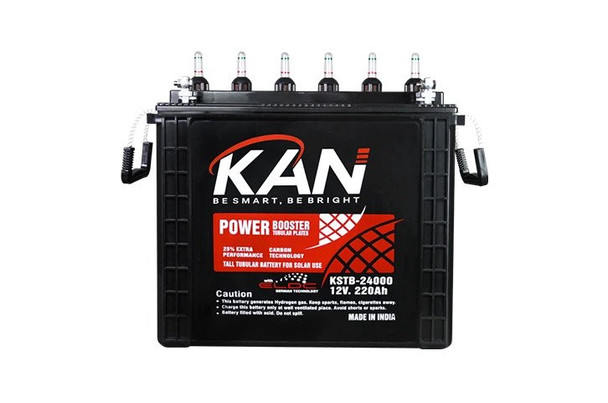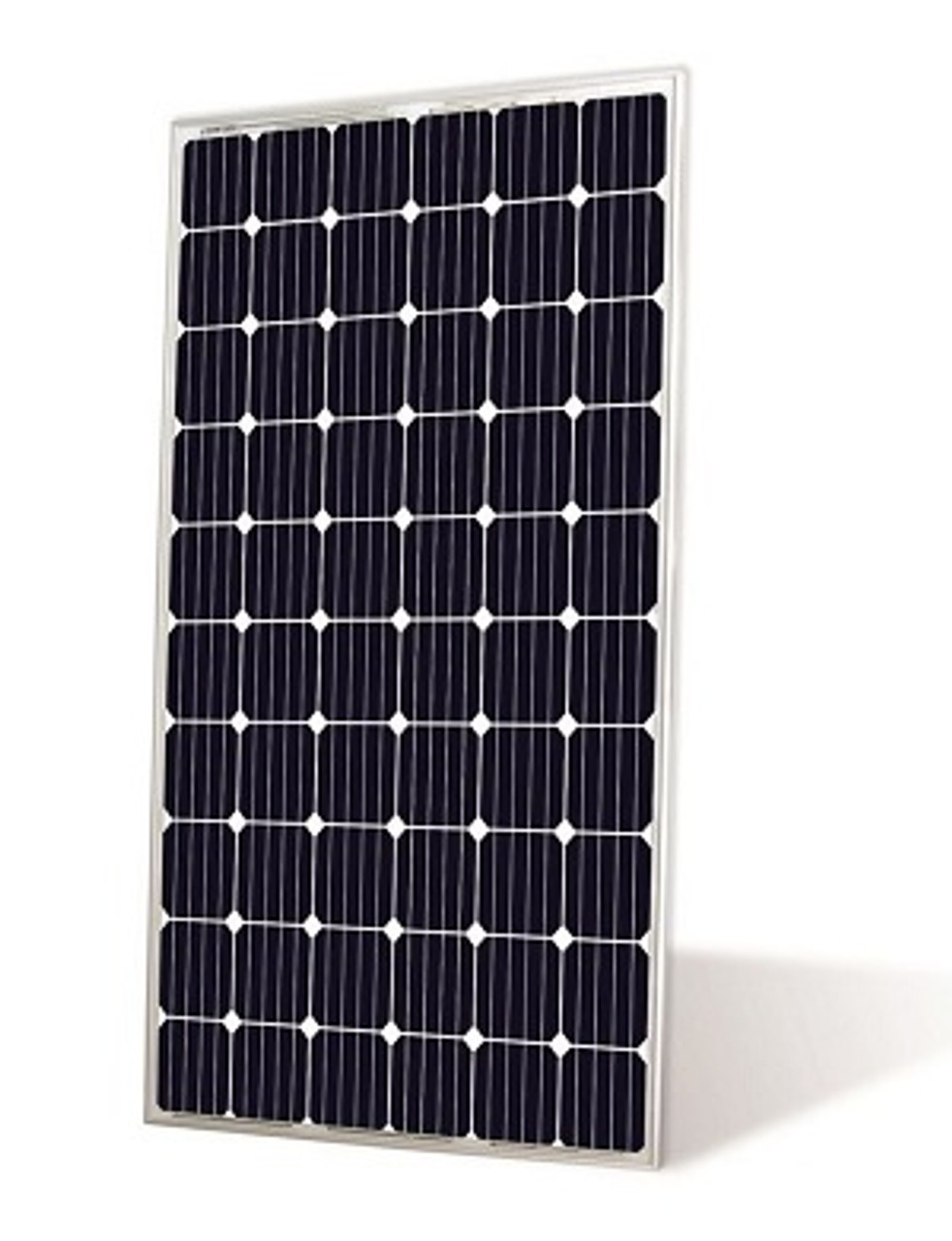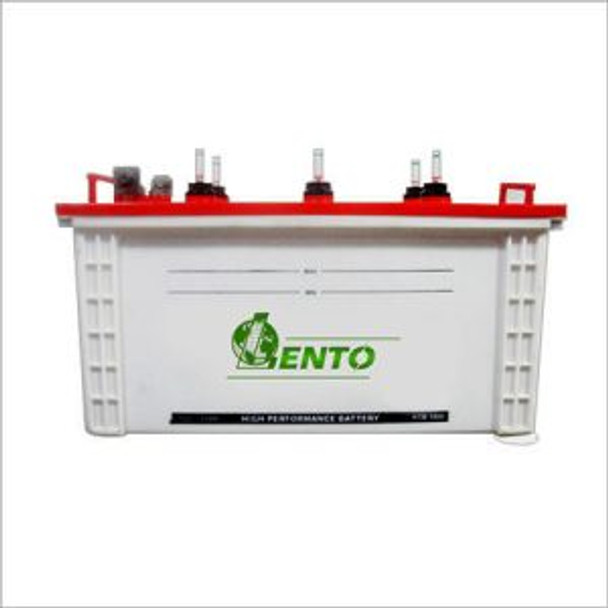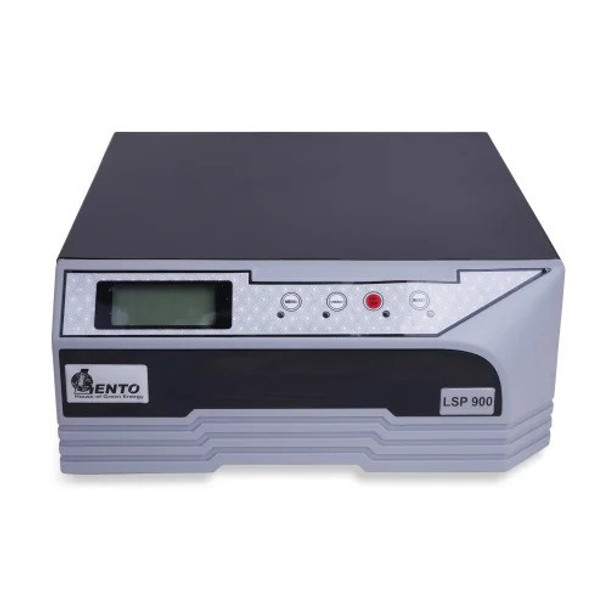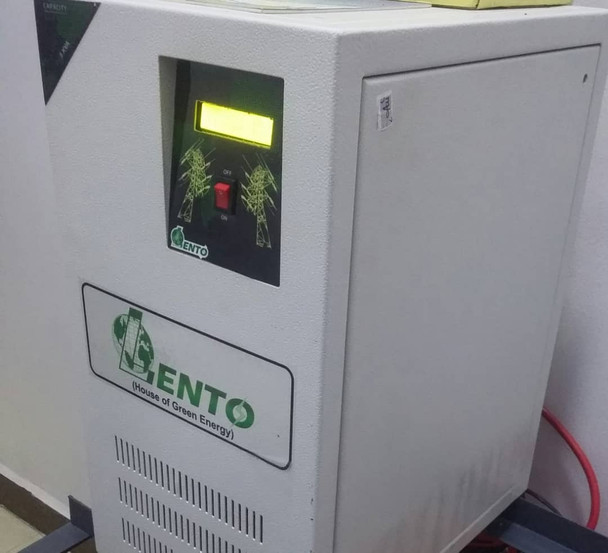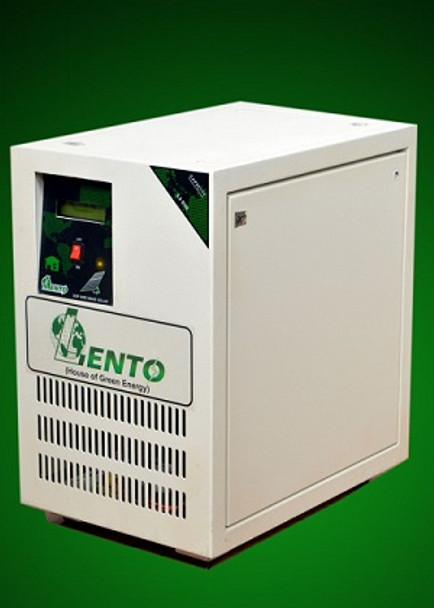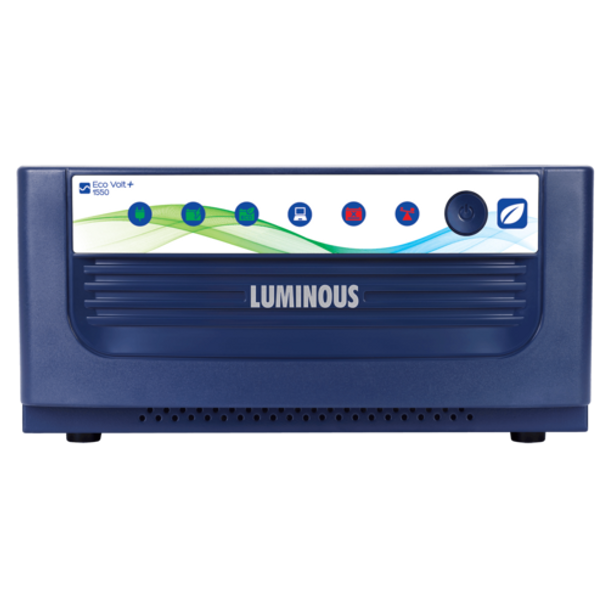Innovations in Solar Power: Integrating Solar Panels with Inverters
Solar power innovations represent a significant stride towards sustainable energy solutions, offering renewable alternatives to conventional power sources. From improved panel efficiency to advanced storage systems, solar technology continues to evolve, driving the global transition towards clean energy. One crucial aspect of maximizing the potential of solar power systems is the integration of solar panels with inverters. Power Inverters play a vital role in converting the direct current (DC) electricity generated by solar panels into alternating current (AC) electricity usable by homes and businesses. This integration is essential for optimizing energy production, enhancing system reliability, and ensuring seamless operation of solar installations.
Kan 12v. 220AH Solar Tubular Battery
One notable innovation in solar power technology is the seamless integration of solar panels with inverters, marking a significant advancement in renewable energy systems. This integration enables efficient conversion of the direct current (DC) electricity produced by solar panels into alternating current (AC) electricity, which is compatible with standard electrical grids and appliances. By combining solar panels and inverters into a single unit or integrating them closely within the system, manufacturers have streamlined installation processes and improved overall system performance. This innovation not only enhances energy production but also optimizes system reliability, making solar power more accessible and reliable for residential, commercial, and industrial applications.
You may also like: The Best Solar Panel in Nigeria 2024 Reviews
Solar Panel (Mono PERC) 390watt Tescom
The Role of Solar Panels in Renewable Energy
Solar panels, or photovoltaic (PV) systems, are at the forefront of converting solar radiation into usable electricity. The technology operates on the principle of the photovoltaic effect, where sunlight is absorbed by cells made of semiconductor materials, such as silicon. When photons from sunlight strike these cells, they dislodge electrons, creating an electrical current. This current is then harnessed and converted from direct current (DC) to alternating current (AC) through an inverter, making it suitable for household and commercial use.
The solar panel's construction involves multiple layers. The top layer, often made of tempered glass, shields the cells from environmental factors while allowing sunlight to penetrate. Beneath this protective layer, the solar cells, interconnected by conductive metal, capture and transport the generated electricity. Finally, a backsheet protects the underside from moisture.
The shift towards solar energy comes with a multitude of advantages. Primarily, it is a clean, renewable source that reduces reliance on fossil fuels, thereby cutting down greenhouse gas emissions and contributing to a healthier environment. Economically, solar energy provides significant savings on electricity bills over time, as it allows individuals and businesses to generate their own power, effectively insulating them from the volatility of traditional energy costs. Additionally, solar installations can increase property values and offer long-term performance warranties, ensuring a return on investment for years to come. Furthermore, solar energy systems require minimal maintenance compared to traditional power sources. The absence of moving parts in solar panels translates to fewer chances of mechanical failure, ensuring longevity and consistent performance. As technology advances, the efficiency and cost-effectiveness of solar panels continue to improve, making them increasingly accessible and viable for widespread adoption.
Lento Tubular Battery 200AH/12V
Understanding Inverters in Solar Power Systems
Inverters are pivotal components in solar power systems, serving as the bridge between the photovoltaic cells and the electrical grid or appliances. They convert the direct current (DC) generated by solar panels into alternating current (AC), which is the standard form of electricity used in homes and businesses. This conversion is crucial because most electrical devices are designed to operate on AC, not DC. Inverters also play a role in maximizing the efficiency of power generation by matching the output to the load requirements and ensuring the safe operation of the electrical system.
Types of Inverters Used in Solar Power Systems
There are several types of inverters used in solar power systems, each with its own set of characteristics and advantages:
- String Inverters: These are the most common type of inverters used in home solar installations. They connect a string of solar panels to a single inverter, which converts the collective DC output into AC. They are cost-effective and easy to install but may be less efficient in shaded conditions since the entire string’s output can be affected by the performance of the weakest panel.
- Microinverters: Installed on each solar panel, microinverters convert DC to AC at the panel level. This allows for individual panel monitoring and optimization, which can be particularly beneficial in situations where panels are subject to different shading conditions. Microinverters tend to improve overall system efficiency and make it easier to expand the system in the future.
- Power Optimizers: These devices are similar to microinverters in that they are installed at the panel level. However, power optimizers condition the DC power and send it to a central inverter for conversion to AC. They combine the benefits of string inverters and microinverters, offering efficiency improvements and individual panel monitoring without the need for multiple inverters.
- Hybrid Inverters: Also known as multi-mode inverters, they not only convert DC to AC but can also work with battery storage systems. Hybrid inverters can manage inputs from solar panels and batteries, providing flexibility and ensuring a continuous power supply even during outages.
Each type of inverter has its place depending on the specific requirements of the solar power system, such as size, budget, and installation environment. The choice of inverter can significantly impact the efficiency and scalability of the solar array.
LENTO INVERTER 1415VA 12V
Innovations in Solar Panel-Inverter Integration
Advanced Technologies For Seamless Integration
The integration of solar panels with inverters has seen remarkable advancements, particularly with the development of Current Source Inverters (CSIs). These inverters are designed for optimal performance, control, and integration within photovoltaic systems. CSIs stand out for their ability to ensure a seamless conversion of solar-generated energy with the electricity grid, facilitating stable and reliable integration. They come in various architectures, such as two-level, three-level, and multi-level, each offering different benefits in terms of power factor and total harmonic distortion values. These attributes are crucial for meeting standards like IEEE 1547 and IEC 61727, which govern the interconnection and interoperability of distributed resources with electrical power systems.
Smart Inverters and Monitoring Systems
Smart inverters represent a leap forward in solar technology. They not only convert DC to AC but also provide advanced grid support functionalities. This includes enhanced situational awareness and rapid response to grid abnormalities, which is essential for maintaining grid stability as the penetration of solar power increases.
Moreover, modern solar monitoring systems have become increasingly sophisticated, offering real-time snapshots of solar energy production and historical data analysis. Top monitoring systems provide insights into each panel’s performance, alerting users to any production discrepancies or electrical faults. This level of monitoring is invaluable for maintaining system efficiency and ensuring that solar investments are performing optimally.
The advent of Artificial Intelligence (AI) in solar power systems is another noteworthy development. AI algorithms can optimize the performance of inverters by predicting energy production, identifying potential issues, and adapting to changing environmental conditions. This level of intelligence enhances overall system efficiency and reliability.
These innovations are pivotal in the evolution of solar power systems, making them more efficient, reliable, and easier to manage. They empower users with greater control over their energy production and contribute to the broader adoption of solar energy.
Lento Inverter 2.5KVA 36V Solar Hybrid
Benefits of Integrating Solar Panels with Inverters
1. Increased Energy Efficiency
The integration of solar panels with inverters is a key factor in achieving increased energy efficiency in solar power systems. Inverters play a crucial role in converting the variable direct current (DC) output of solar panels into a more usable alternating current (AC), which is essential for powering homes and businesses. This process not only makes the energy produced by solar panels more accessible but also more efficient, as modern inverters are designed to minimize energy loss during the conversion process. Additionally, advanced inverters with Maximum Power Point Tracking (MPPT) ensure that solar panels operate at their optimal power output under varying conditions, further enhancing the system’s energy efficiency.
2. Optimized Power Generation
Optimized power generation is another significant benefit of integrating solar panels with inverters. Inverters with built-in MPPT technology can continuously adjust the operating conditions of the solar panels to adapt to environmental changes such as sunlight intensity, temperature, or shading. This dynamic adjustment ensures that the solar panels consistently operate at peak efficiency, maximizing the power output and reducing power loss due to variations in performance. The result is a solar power system that can produce more electricity from the same amount of sunlight, making it a more reliable and effective source of renewable energy.
3. Enhanced System Reliability
Enhanced system reliability is a critical advantage of integrating solar panels with inverters. Modern inverters contribute to the stability and reliability of the grid by maintaining stable voltage and frequency levels and providing grid support functionalities. This includes rapid response to grid abnormalities and enhanced situational awareness, which are essential for maintaining grid stability as the penetration of solar power increases. Furthermore, the integration of battery storage with hybrid inverters can provide additional reliability, allowing solar power systems to operate independently of the grid during outages.
Pure Sine Wave Inverter 7.5KVA 120V Lento
Future Trends and Developments
- Emerging Innovations in Solar Power Technology
The solar power industry is witnessing a surge of innovations that promise to enhance the efficiency and applicability of solar technology. Among the most notable advancements are heterojunction and tandem solar cells, which combine different semiconductor materials to capture a broader spectrum of sunlight, thereby increasing overall cell efficiency. Perovskite tandem solar cells are particularly exciting, as they have already exceeded 33% efficiency in laboratory settings, a significant leap from the current average. These cells layer traditional silicon with perovskite materials, known for their excellent light absorption properties, to achieve higher efficiency levels.
Another emerging trend is the development of building-integrated photovoltaics (BIPV), which seamlessly incorporate solar technology into building materials, such as windows or roof tiles, making solar power generation a more integral and aesthetic part of urban architecture. Additionally, floating solar farms are gaining traction, especially in areas with limited land availability, by installing solar panels on bodies of water.
- Potential Advancements in Solar Panel-Inverter Integration
The integration of solar panels with inverters is also undergoing significant advancements. The focus is on developing smart inverters that can support high levels of distributed solar generation while maintaining grid stability. These advanced inverters come equipped with sophisticated monitoring and communication capabilities, allowing them to respond dynamically to changes in grid conditions and even make autonomous decisions to improve power quality and provide ancillary services.
Moreover, the integration of solar with energy storage systems is becoming increasingly common, with hybrid inverters managing inputs from both solar panels and batteries. This not only provides a continuous power supply during outages but also enables the storage of excess solar energy for later use, enhancing the flexibility and reliability of solar power systems.
These trends and developments are setting the stage for a more efficient, reliable, and widespread adoption of solar energy, positioning it as a cornerstone of the future renewable energy landscape.
Inverter 1.5KVA/24V Eco Luminous
Related Article:
The Role of Inverters in Managing Unstable Power Supplies in Nigeria
SOLAR ENERGY ADVANTAGES AND DISADVANTAGES
Conclusion
In the quest for a sustainable future, the integration of solar panels with inverters stands as a key enabler, transforming solar energy into a practical, usable form. Solar panels capture the sun’s rays to generate direct current, while inverters convert this into alternating current, enhancing accessibility and efficiency. This synergy optimizes power generation, increases energy efficiency, and enhances system reliability. Innovations such as Current Source Inverters, smart inverters, and integrated monitoring systems are paving the way for a more intelligent energy future, while emerging technologies like heterojunction cells, BIPV, and floating solar farms promise to redefine solar power. As these advancements continue, the integration of solar panels with inverters will remain vital, capturing and utilizing the sun’s energy to its fullest potential, leading us towards a cleaner, greener world. For more information or enquiries about getting your own solar panels and inverter system, do not hesitate to Contact us.


